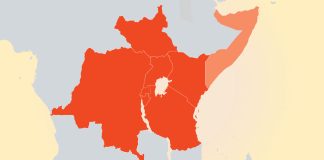Widespread food insecurity is back on the table. War and organized violence are the main drivers of acute food insecurity, followed by weather events and post-pandemic economic disruption. For some places this is a near-constant problem, but right now there are several new areas experiencing difficulty. In the Americas, for instance, migration, organized crime and abusive government policies have put food security at risk. Ukraine stands out not only for its own food issues but also its role as a provider of food for the rest of the world. In North Korea and Myanmar (and to a lesser extent Sri Lanka), food insecurity could destabilize regimes and cause regional crises.
There is little reason to believe the global situation will improve anytime soon. A prolonged Russia-Ukraine war will have lasting effects on local production and grain export infrastructure that will take many months, if not years, to repair. And distortions in the fertilizer market and high prices will also affect crop prices in 2023.






 Special Collection – The Middle East
Special Collection – The Middle East